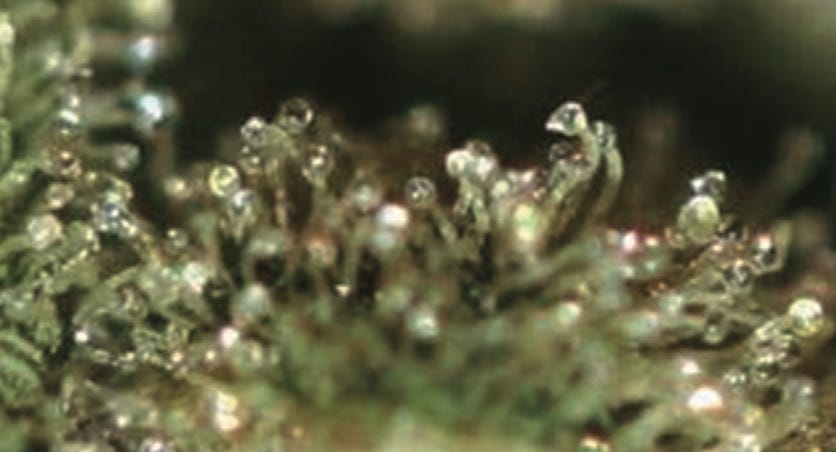Cannabis has been a medicinal plant of unparalleled versatility for millennia (Mechoulam, 1986; Russo, 2007; 2008), but whose mechanisms of action were an unsolved mystery until the discovery of tetrahydrocannabinol (THC) (Gaoni and Mechoulam, 1964a), the first cannabinoid receptor, CB1 (Devane et al., 1988), and the endocannabinoids, anandamide (arachidonoylethanolamide, AEA) (Devane et al., 1992) and 2-arachidonoylglycerol (2-AG) (Mechoulam et al., 1995; Sugiura et al., 1995).
While a host of phytocannabinoids were discovered in the 1960s:
cannabidiol (CBD) (Mechoulam and Shvo, 1963),
cannabigerol (CBG) (Gaoni and Mechoulam, 1964b),
cannabichromene (CBC) (Gaoni and Mechoulam, 1966),
cannabidivarin (CBDV) (Vollner et al., 1969) and
tetrahydrocannabivarin (THCV) (Gill et al., 1970),
The overwhelming preponderance of research focused on psychoactive THC. Only recently has renewed interest been manifest in THC analogues, while other key components of the activity of cannabis and its extracts, the cannabis terpenoids, remain understudied (McPartland and Russo, 2001b; Russo and McPartland, 2003). The current review will reconsider essential oil (EO) agents, their peculiar pharmacology and possible therapeutic interactions with phytocannabinoids. Nomenclature follows conventions in Alexander et al. (2009).
Phytocannabinoids and terpenoids are synthesized in cannabis, in secretory cells inside glandular trichomes (Figure 1) that are most highly concentrated in unfertilized female flowers prior to senescence (Potter, 2004; Potter, 2009).
Figure 1 | Cannabis capitate glandular (EBR by permission of Bedrocan BV, Netherlands).
Geranyl pyrophosphate is formed as a precursor via the deoxyxylulose pathway in cannabis (Fellermeier et al., 2001), and is a parent compound to both phytocannabinoids and terpenoids (Figure 2).
Figure 2 | Phytocannabinoid and cannabis terpenoid biosynthesis
After coupling with either olivetolic acid or divarinic acid, pentyl or propyl cannabinoid acids are produced, respectively, via enzymes that accept either substrate (de Meijer et al., 2003), a manifestation of Mechoulam’s postulated ‘Nature’s Law of Stinginess’. Although having important biochemical properties in their own right, acid forms of phytocannabinoids are most commonly decarboxylated via heat to produce the more familiar neutral phytocannabinoids (Table 1).
Table 1
Alternatively, geranylpyrophosphate may form limonene and other monoterpenoids in secretory cell plastids, or couple with isopentenyl pyrophosphate in the cytoplasm to form farnesyl pyrophosphate, parent compound to the sesquiterpenoids, that co-localizes with transient receptor potential vanilloid receptor (TRPV) 1 in human dorsal root ganglion, suggesting a role in sensory processing of noxious stimuli (Bradshaw et al., 2009), and which is the most potent endogenous ligand to date on the G-protein coupled receptor (GPR) 92 (Oh et al., 2008).
An obvious question pertains to the chemical ecology of such syntheses that require obvious metabolic demands on the plant (Gershenzon, 1994), and these will be considered. Is cannabis merely a crude vehicle for delivery of THC?
Might it rather display herbal synergy (Williamson, 2001) encompassing potentiation of activity by active or inactive components, antagonism (evidenced by the ability of CBD to reduce side effects of THC; Russo and Guy, 2006), summation, pharmacokinetic and metabolic interactions? Recently, four basic mechanisms of synergy have been proposed (Wagner and Ulrich-Merzenich, 2009):
(i) multi-target effects;
(ii) pharmacokinetic effects such as improved solubility or bioavailability;
(iii) agent interactions affecting bacterial resistance; and
(iv) modulation of adverse events.
Cannabis was cited as an illustration.
Could phytocannabinoids function analogously to the endocannabinoid system (ECS) with its combination of active and ‘inactive’ synergists, first described as an entourage (Ben-Shabat et al., 1998), with subsequent refinement (Mechoulam and Ben-Shabat, 1999) and qualification (p. 136): ‘This type of synergism may play a role in the widely held (but not experimentally based) view that in some cases plants are better drugs than the natural products isolated from them’. Support derives from studies in which cannabis extracts demonstrated effects two to four times greater than THC (Carlini et al., 1974); unidentified THC antagonists and synergists were claimed (Fairbairn and Pickens, 1981), anticonvulsant activity was observed beyond the cannabinoid fraction (Wilkinson et al., 2003), and extracts of THC and CBD modulated effects in hippocampal neurones distinctly from pure compounds (Ryan et al., 2006).
Older literature also presented refutations: no observed differences were noted by humans ingesting or smoking pure THC versus herbal cannabis (Wachtel et al., 2002); pure THC seemed to account for all tetrad-type effects in mice (Varvel et al., 2005); and smoked cannabis with varying CBD or CBC content failed to yield subjective differences combined with THC (Ilan et al., 2005). Explanations include that the cannabis employed by Wachtel yielded 2.11% THC, but with only 0.3% cannabinol (CBN) and 0.05% CBD (Russo and McPartland, 2003), and Ilan’s admission that CBN and CBD content might be too low to modulate THC. Another factor is apparent in that terpenoid yields from vaporization of street cannabis were 4.3–8.5 times of those from US National Institute on Drug Abuse cannabis (Bloor et al., 2008).
It is undisputed that the black market cannabis in the UK (Potter et al., 2008), Continental Europe (King et al., 2005) and the USA (Mehmedic et al., 2010) has become almost exclusively a high-THC preparation to the almost total exclusion of other phytocannabinoids. If – as many consumers and experts maintain (Clarke, 2010) – there are biochemical, pharmacological and phenomenological distinctions between available cannabis ‘strains’, such phenomena are most likely related to relative terpenoid contents and ratios. This treatise will assess additional evidence for putative synergistic phytocannabinoidterpenoid effects exclusive of THC, to ascertain whether this botanical may fulfil its promise as, ‘a neglected pharmacological treasure trove’ (Mechoulam, 2005).







Please could you provide the full reference for this article. I’d like to cite in my PhD thesis. Thanks